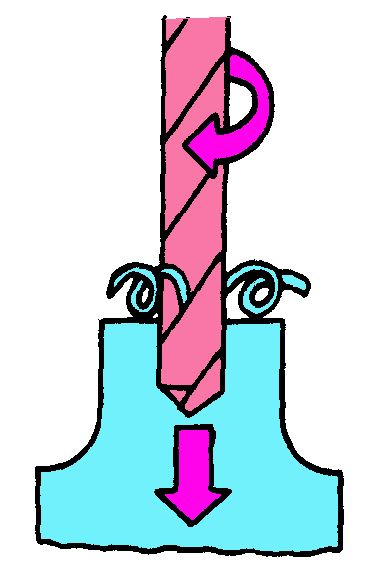
Privacy statement: Your privacy is very important to Us. Our company promises not to disclose your personal information to any external company with out your explicit permission.
Select Language
![]() December 07, 2022
December 07, 2022
First, drilling
There are many different types of machine tools and different sizes. The types of modern machine tools are almost limitless. Some machine tools are small enough to be installed on the workbench, and some are large enough to build a special factory to accommodate. Some machine tools are quite simple, and some machines are very complicated in construction and operation.
Regardless of whether the machine is large or small, simple or complex, it can be divided into five categories. These five categories are the five basic methods for forming metal.
Drilling is the process of drilling holes in solid metal. Use a rotary drill called a twist drill. The machine used for drilling is called a drilling machine. There are also many models and specifications for drilling machines. In addition to drilling, the drilling machine can be processed in other ways. When drilling, the workpiece is positioned and clamped and fixed; the drill bit is rotated while drilling into the workpiece (see Figure 1).
Second, turning and boring
Ordinary machine tools are the most common machine tools used to turn workpieces. Turning is the process of cutting metal from a workpiece. While the workpiece is rotating, the tool cuts into the workpiece or turns along the workpiece (see Figure 2).

Figure 1 Drilling

Figure 2 turning

Figure 3 Pupil

Figure 4 Milling

Figure 5 grinding
A boring is a method of expanding or further machining a hole that has been drilled or cast on a metal workpiece. The boring on the lathe is done by rotating the single-edged tool on one side and facing the workpiece (see Figure 3).
Third, milling
Milling is the process of cutting a metal with a rotating tool that has multiple cutting edges called a milling cutter (see Figure 4).
Fourth, grinding
Grinding is a method of cutting metal using a grinding wheel called a grinding wheel. Grinding finishes the workpiece, and the processed workpiece is accurate in size and smooth in surface. When the circular workpiece is ground, the workpiece rotates on one side and feeds the rotating wheel. When grinding a flat workpiece, the workpiece reciprocates under a rotating grinding wheel (see Figure 5). The grinding process is often used for the final finishing of heat-treated hard workpieces to achieve precise dimensions.
Fifth, bull head planing, gantry planing and inserting
These processes use single-edged tooling to produce precise planes. We should understand the difference between a planer, a planer and a slot machine. When machining with a bullhead planer, the workpiece is fed to the tool and the tool reciprocates over the workpiece (see Figure 6).
When machining with a gantry, the tool cuts into the workpiece or feeds the workpiece, and the workpiece moves back and forth under the tool (see Figure 7).

Figure 6 Bull head planer

Figure 7 Gantry Planer

Figure 8 Insertion processing
The cutting process is similar to the bullhead machining.
The insertion machine is actually a vertical bullhead planer, but its cutter is moving up and down. During the cutting process, the workpiece is moved in the direction of the tool. Depending on the type of workpiece being machined, it is sometimes straight and sometimes curved (see Figure 8). The inserting bed is a vertical bullhead planer, mainly used for cutting certain types of gears.
The broaching machine can be classified into the gantry planer. The broach has a plurality of teeth. The broaching machine can be used for internal machining, such as machining square holes, as well as for external machining, machining planes or a specific shape.
The above is the Five Basic Methods Of Metal Machining (Figure) we have listed for you. You can submit the following form to obtain more industry information we provide for you.
You can visit our website or contact us, and we will provide the latest consultation and solutions
Send Inquiry
Most Popular
lastest New
Send Inquiry

Privacy statement: Your privacy is very important to Us. Our company promises not to disclose your personal information to any external company with out your explicit permission.

Fill in more information so that we can get in touch with you faster
Privacy statement: Your privacy is very important to Us. Our company promises not to disclose your personal information to any external company with out your explicit permission.